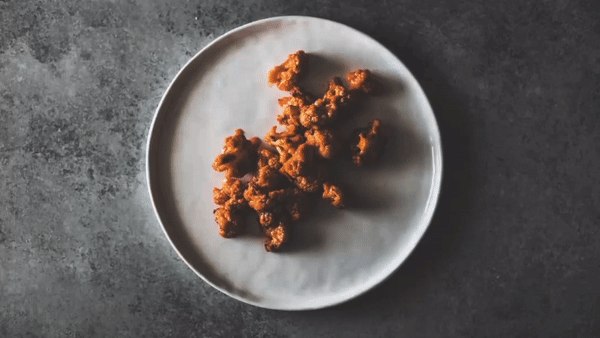Tuesday, 5 September 2017
A Forgotten Taste of Europe
In America, talk of Jewish cuisine typically refers to all things Ashkenazi: the stuffed cabbage, rugelach, potato latkes, and other dishes of central and Eastern Europe that Jewish immigrants brought with them to this country. The conversation too often mutes the importance of Sephardic and Mizrahi cuisines—although that is beginning to change. At the same time, it also tends to present Ashkenazi cuisine as monolithic, blurring the regional ingredients, recipes, and cooking styles that made Jewish cooking in, say, Lithuania or Poland distinct from Jewish cooking in Hungary or Romania.
Enter The German-Jewish Cookbook. Published this month by Brandeis University Press, the authors—mother-daughter team Gabrielle Rossmer Gropman and Sonya Gropman—lead readers on a historical and gastronomic exploration of a country’s unique contributions to the Jewish table.
The book’s introduction makes the authors’ intentions perfectly clear: “We wrote this book to preserve and document the cuisine of a nearly vanished culture.” And traditional German Jewish food is precisely that, nearly vanished. There is an extant Jewish food culture in Germany today, but it is shaped by the Israelis and Eastern European Jews who settled there in the decades after WWII. What’s gone are, as the book puts it, the vibrant “traditions of a culture that existed in Germany (and Austria) for hundreds of years—up until the Nazi era eradicated it.”
The idea for the cookbook originally came from Sonya, who grew up in Boston hearing her family’s stories about Germany and eating traditional dishes. At first, Gaby—who was born in Bramberg, Germany, in 1938 and immigrated to the United States with her parents a year later—resisted. Both Sonya and Gaby are visual artists, not chefs or researchers, which made the task seem daunting. But Sonya persisted and, over time, Gaby said she realized this was a story they were uniquely suited to tell.
Other cookbook authors have tackled regional Jewish cuisines. Tablet columnist Joan Nathan’s Quiches, Kugels, and Couscous: My Search for Jewish Cooking in France, is one standout example. But it is rare to find a regional contemporary cookbook written by two people with such close familial knowledge of the subject. The German-Jewish Cookbook is, of course, a story of the holiday and everyday foods of the Jews of Germany. But it is also a story of immigration and resettling, particularly to Washington Heights, the upper Manhattan neighborhood where Gaby’s family settled. For much of the early and mid 20th-century, Washington Heights was a hub for nearly 20,000 German Jews. Gaby’s memories—of Washington Heights’ sloping streets and Hudson River views, of the kosher bakeries, butcher shops, and greengrocers that lined the streets, and of her family’s rich Shabbat and holiday meals—factor prominently into the book.
The Gropmans began their culinary and historical research with books, particularly Jewish cookbooks published in Germany between 1850 and WWII. Gaby’s grandmother Emma had two prized cookbooks in her collection, a handwritten one and one professionally published at the turn of the 20th century, that provided both inspiration and recipes. From there, Sonya said, the research process evolved organically—a years-long process of reading, cooking, and, on more than one occasion, arguing and making up.
They also interviewed as many people as possible. Firsthand accounts of German Jewish food are hard to come by. As the Gropmans write in the book, many German Jews—particularly those who came to America as children on the kindertransport—“had parents who were killed, or from whom they were separated at a young age.” And those who made it over with their families and memories intact are, at this point, quite advanced in age. Early on, the Gropmans contacted Dr. Ruth Westheimer, the well-known German-Jewish sex therapist and media personality, who has lived in Washington Heights for decades. “But she didn’t grow up with her mom and never learned to cook,” Sonya said.
Two of the standouts from the Gropmans’ interviews include Johanna (Hanna) Zurndorfer and Herta Bloch—women who, like Gaby, immigrated from Germany to New York in the 1930s. Zurndorfer remembered her childhood vividly: everything from the carp and spätzle her mother cooked for Shabbat, to the dairy cow they kept in the yard for milk and the goose that her mother “fattened with pellets of dough.” That goose would produce enough schmaltz to cook with for months. Bloch, meanwhile, was a local celebrity in Washington Heights because she and her husband co-owned the kosher German butcher shop Bloch & Falk. As the book states, “She knew practically everyone in the community because almost everyone came in … to buy their sausages and smoked meat.”
Both of these women, who remained vibrant into their 90s, died within the last two years—before the book could be published. Gaby and Sonya caught their stories and recipes just in time.
When it came to the recipes, there are dishes in The German-Jewish Cookbook that would be familiar to most Ashkenazi cooks: herring salad, coconut macaroons, chicken soup with matzo balls. But many of the dishes are specific to the German Jewish experience. Take berches, also called “water challah.” Like Eastern European egg challah, berches is made from a puffed, tender dough that is braided into a ceremonial loaf. But it contains no eggs and only the pinch of sugar needed to activate the yeast. Instead, the dough is typically enriched with mashed potato. “It looks the same on the outside, but is a completely different bread,” Sonya said.
A small handful of bakeries in Germany still make berches today. “Remarkably, these bakeries, which once baked berches every week for their Jewish customers, apparently never stopped,” the book states. But while the bread is available, its Jewish history and significance is lost on customers.
In a similar case, while visiting a food market in Frankfurt, Gaby and Sonya came across a dried beef sausage that seemed out of place among the overwhelming array of pork sausages. They realized it was a likely remnant of a time when Jewish customers had shopped there. “It wasn’t kosher, and not geared toward a Jewish audience anymore. But it was clear that the butcher shop had just never stopped making it,” Gaby said. They brought one home and used it while making lentil soup with ringwurst, which appears in the book. “It tasted almost identical to the beef sausages I ate growing up in Washington Heights,” said Gaby.
The Gropmans developed the book’s recipes with a contemporary cook in mind, providing sources for harder-to-find ingredients and using modern techniques. But when it came to flavor, they decided to keep the dishes as historically accurate as possible. Knieküchlein or “knee doughnuts” offer one humorous example. The doughnut was prepared for Hanukkah by groups of women who would sit together and stretch balls of yeast dough over their knees before slipping the rounded disks into hot oil. “The first step was always to wash their knees,” they write in the book. In addition to their rustic preparation, the book states that the doughnuts also have an old-fashioned taste, “not too sweet or rich, but satisfying in their fried, doughy goodness.”
The book describes another baked good, haman—which are little cookies shaped like gingerbread men, representing the Purim story’s villain—as having a “bready, not too sweet” flavor that might be less familiar to the modern palate. “People could make them much sweeter, but we followed the older tradition,” Sonya said. Americans today are most familiar with triangular hamataschen from Eastern European. But in Germany, haman cookies were decidedly the most popular Purim treat.
Produce-focused dishes, which tend to get lost in the American concept of Ashkenazi Jewish food, feature prominently in the book: everything from a springy radish salad and chilled sour cherry soup to a kosher version of the traditional German dish kohlrabi in white sauce. “There was more of a vegetable culture present in the old kosher German cookbooks than we expected,” Gaby said. “It was a pleasure to put those dishes into our book.”
In some cases, regional fruits and vegetables shaped German-Jewish dishes in specific ways. There is plenty of crossover with Eastern European cuisine, of course, like the shared love of radishes, stone fruits, and berries. But as Gaby said, “Germans have an obsession with asparagus” that doesn’t as readily apply to Eastern European cuisine. Not surprisingly, then, The German-Jewish Cookbook includes recipes for spring pea and asparagus soup and vegetable vinaigrette that includes the springy spears.
It is hard to overstate the importance of a book like The German-Jewish Cookbook, which the Gropmans hope to have translated into German. It captures a lost moment in time, elevating a rich history and culture that, within a generation, will have almost no one left who experienced it. “When I go back to Germany, Jews don’t exist there anymore,” Gaby said. “The history of the expulsion is there, but what came before is not. This was something we needed to do.”
Subscribe to:
Post Comments (Atom)











0 comments:
Post a Comment